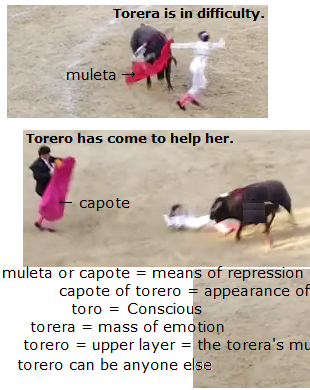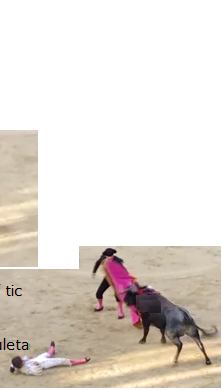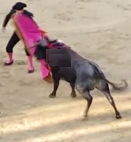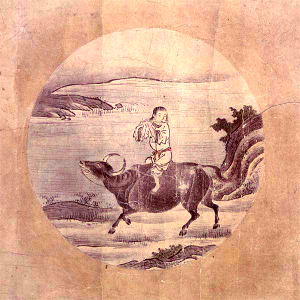The Kuriki method (the first edition in 2007) is a theory about Tourette’s syndrome (tic disorder) and obsessive-compulsive disorder to cure these diseases without medication. This theory is based on the author’s inference and interpretation regarding the structure of these diseases. Since it has been written for the psychoanalysts, reading will be difficult for people in general and it might be sometimes read erroneously. Therefore the Kuriki method must presuppose that the patient is treated by a nearby psychoanalyst, and that, between the patient and the Kuriki method, there is always the psychoanalyst. The explosion of emotional catharsis, which has strong repercussions, is done only for three seconds, once a week: beyond this rhythm, it would be an accident caused by negligence, and the psychoanalyst who is inexperienced in emotional catharsis must take responsibility for the temporary mental collapse caused by the accident. Also, to the patient who has weak capacity of logical reasoning, the psychoanalyst must explain well on the violent emotion of revenge caused by the illusory confusion between the person of the traumatic image in his head and the person in the real world.
Cure for Tourette’s syndrome (tic disorder) and OCD without medication
§25


§25
Awareness of repressed bodily sensations
The upper layer of tic disorder
It is logical to assume that patients with Tourette’s syndrome must have a lot of appearances of the « compulsive intramuscular sensation » of tic disorder at the time of effort, such as climbing a lot of stairs, carrying heavy luggages and walking, doing a marathon, etc. The mechanism of tic wants to repress disagreeable bodily sensations by putting the « compulsive intramuscular sensation » of tic disorder in the foreground of the Conscious. As a way of treatment for tic disorder, the Kuriki method doesn’t consider the mechanism of repression as a repressing lid, but the mechanism of repression is a choice of priority object. The Unconscious fabricates an object and give it priority as object of the Conscious. When the Unconscious of a child represses, for example, the genital sensation, another bodily sensation will get priority as object of the Conscious. For example, if the child has an eye tic of looking diagonally at the ceiling, the sensation of the muscle of the eyeball, the existence of that muscle, the movement to this muscular sensation will get priority in the Conscious. It is the mechanism of the repression of the genital sensation as a tic disorder. The false reason can be saying to himself in his head that this is eye gymnastics, for example. The sensations of various body parts can be repressed by the « compulsive intramuscular sensation » of tic disorder. The genital sensation is just only as an example.
Three phases are overlapping, rather than successive. Finally, the child will have all three phases in the upper layer of tic disorder.
1. Primitive repressed sensations §26
2. Indefinite repressed sensations §27
3. Recursive repressed sensations §28
The Conscious cannot recognize the relationship between the body and the Unconscious. Only effects of this relationship are perceptible as body sensations. Based on these bodily sensations, the hypothesis of the existence of the relationship between the body and the Unconscious is inferred. This is a therapeutic reasoning rather than a philosophical reasoning, and the purpose is the empirical validity. The symptoms of neurosis are always bodily symptoms, and the disease must have both bodily sensations and bodily acts so that it is diagnosed as a neurosis. As an exception, in phobia and panic disorder, if the situation does not allow getting out of the place, like in an airplane, the act of getting out is impossible, and this impossibility is an element of the panic; fear of the increasing of the bodily fear, which will change the bodily condition. Bodily sensations and bodily acts of neurosis will be understood in Absolute-Compulsion.

Readers are invited to reflect on the allegory of corrida, which is at the top of this section. Also, as the torero has come to help the torera, if torera gets out of the arena, he no longer needs to draw the attention of the toro with the capote.
The illustration below can be interpreted here as the Conscious that accepts disagreeable bodily sensations, the state where tic no longer has compulsivity. (This famous illustration has originally a different meaning.)

While the abreaction in psychoanalysis of Freud is only the awareness with the verbalization of the repressed object, the abreaction in the Kuriki method needs the weekly emotional catharsis, marking on the calendar, in order to heal tic disorder. It is an intentional explosion of emotion of three seconds. As a result of the sufficient reduction of the mass of emotion, there will no longer be absolute necessity of the KV (bodily repression) in the upper layer, i.e., the Absolute-Compulsion will disappear. This upper layer, which is not in the Absolute-Compulsion will be forgotten over time, but in fact « intramuscular sensation » of tic can appear when there is some bodily sensation more or less disagreeable. For this, awareness of these disagreeable bodily sensations must be done each time. In addition, it is in the process of healing by the Kuriki method, which converges appearance of « compulsive intramuscular sensation » of tic disorder to zero, even if the patient has appearances of « intramuscular sensation » of tic, which are without Absolute-Compulsion to movement, as one appearance of tic per hour : before, this patient had to do tic movements every minute. The disappearance of the Absolute-Compulsion between the « compulsive intramuscular sensation » of tic disorder and the tic movement is an obvious fact for the patient himself, and the upper layer, which is not necessary any more, will be gradually forgotten. In contrast to the tic movement under Absolute-Compulsion, which was absolutely imperative, after sufficient catharsis, the tic movement will not be forced. Disagreeable bodily sensations will be correctly perceived as disagreeable. The direct relationship between disagreeable bodily sensations and the Conscious is important.
Avoiding attempts of a hasty healing with a too big explosion of catharsis, the Kuriki method writes that the treatment is for three months, however, there is the individual difference of each patient.
By the mentioning of the length of three months as a norm for reference, readers will be able understand concretely the pace of catharsis. Three months do not mean 90 days. While the weekly explosion of catharsis must be as small as possible for safety, awareness of disagreeable bodily sensations of everyday life can be done without hesitation. With the intentional perception of disagreeable bodily sensations, which exist all the time in the living body, the number of appearances of the « intramuscular sensation » of tic converges to zero. While neuroses in general can be cured spectacularly with the verbalization of the object de repression, tic disorder is a disease that heals gradually with emotional catharses. Compared with the decrease of tic movements, the decrease of appearances of « intramuscular sensation » of tic is slower. The decrease of tic movements is equal to the decrease of the Absolute-Compulsion.
